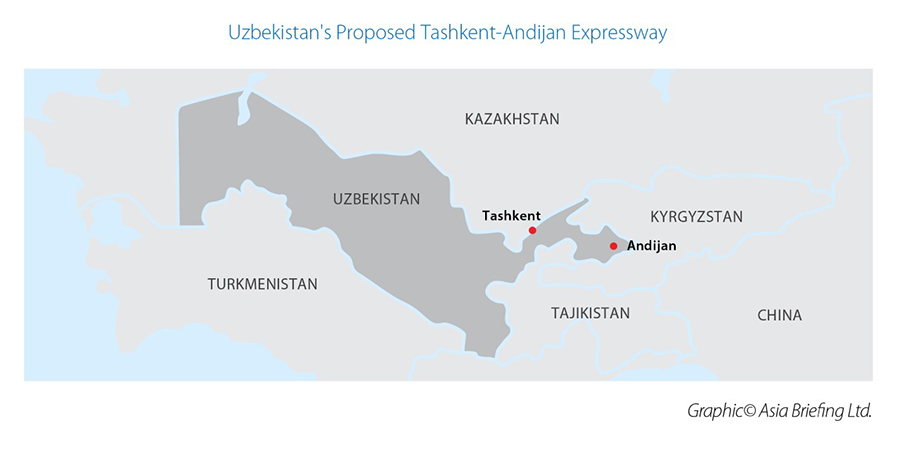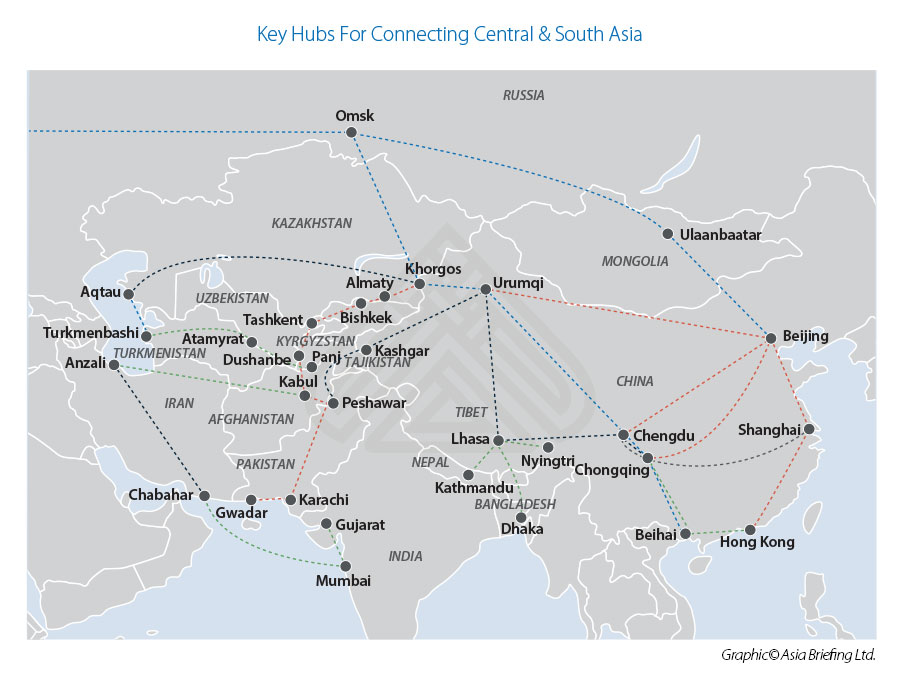Uzbekistan Considering PPP Model to Raise Toll Road Finance Instead of China’s BRI Model

By Chris Devonshire-Ellis
- Proposed toll road between Tashkent and Andijan
- Alternative funding sought as options to China’s BRI
The World Bank has approved a US$350,000 grant to fund a feasibility study for a toll road to link Tashkent with Andijan, a project that would transform connections between the densely populated Ferghana Valley and the rest of Uzbekistan.
This compliments the electrification of the Ferghana Valley railway, which was part funded by the Asian Development Bank at a cost of US$177 million and is due to be completed this year.
The potential 340km road is being touted as a game-changer as it would be the first toll road in Uzbekistan. It also challenges China’s road-building dominance in Central Asia.

Commenting on the plan, Mansur Bustoni, a transport specialist at the World Bank’s office in Tashkent, said that the project would meet “expressway standards using the public-private partnership model (PPP)”. “This PPP would be the first in the Uzbekistan road sector, making it a milestone in history and a catalyst for future work coming to the market.” he said. The US$350,000 grant is the second for the project from the World Bank, following a pre-feasibility study which was started in 2019.
Construction of the road is expected to cost US$2 billion. It also puts another marker down, alongside other projects run by the European Bank for Reconstruction & Development (EBRD) and the Asian Development Bank, that they wish to play an active role in major infrastructure projects in the region. Uzbekistan has recently become a member of the European Union’s GSP+ Trade scheme, illustrating that the EU intends to play a part in Central Asian development. The GSP+ scheme doubles the number of product categories that can be traded duty free between the EU and Uzbekistan.
Curiously, that means that EU funded infrastructure developments will integrate with parts of China’s Belt & Road Initiative, while at the same time provides financial options for nations such as Uzbekistan that until recently have been reliant on Russian and Chinese infrastructure builds and financing.
To date, China has built miles of roads across the region, speeding up journey times and reliability, and is continuing to do so. Three days prior to the World Bank’s announcement of its Tashkent-Andijan toll road plans, the Asian Infrastructure Investment Bank (AIIB) said that it will be funding a US$325 million road upgrade between Obigarm and Nurobod, near Dushanbe in Tajikistan.
The project involves building 30km of road and two tunnels of 1.6km and 1.7km in length.
Infrastructure funding in Central Asia is starting to heat up as plans are made to integrate the region with South Asia. There are plenty of incentives for doing so – promoting regional peace through wealth creation in addition to shortening transport times leading to supply chain cost savings. Uzbekistan has also signed up to plans to construct a railway from Tashkent, through Afghanistan and onto Ports on Pakistan’s southern coast, providing Central Asia with seaport access for the first time.

Related Viewing
- The Greater Eurasian Partnership: Connecting Central & South-East Asia
- Kyrgyzstan and Uzbekistan Resolve 30-Year-Old Border Dispute, Territories Being Exchanged
About Us
Silk Road Briefing is written by Dezan Shira & Associates. The firm has 28 offices throughout Asia, and assists foreign investors into the region. For strategic advisory and business intelligence issues please contact the firm at silkroad@dezshira.com or visit www.dezshira.com





